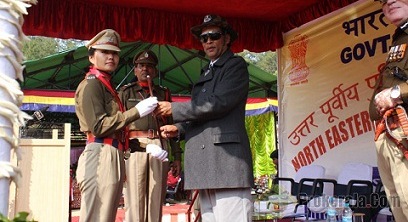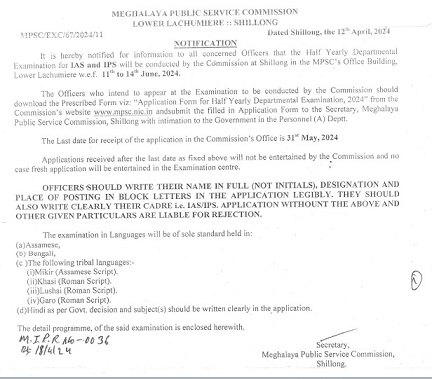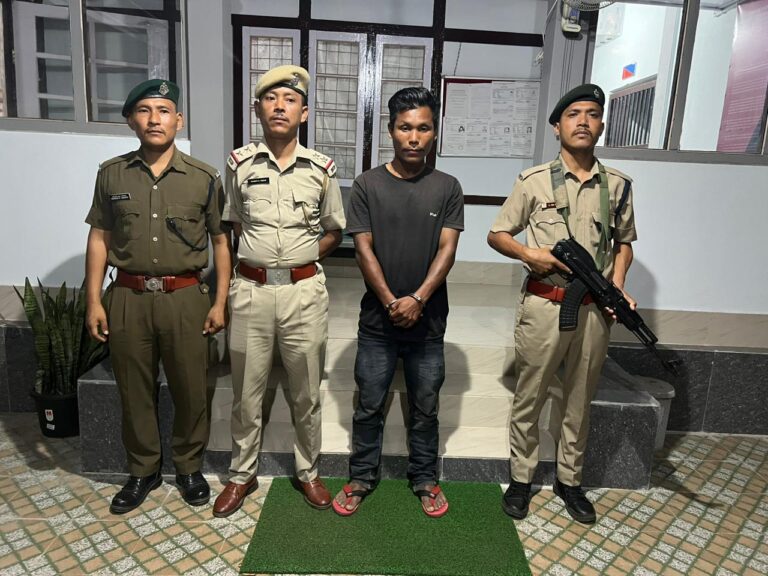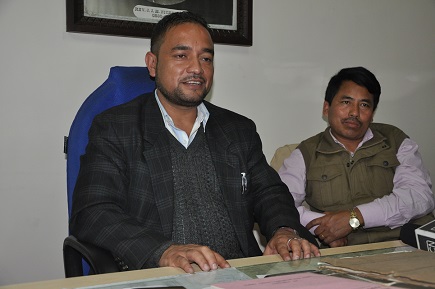
SHILLONG, FEB 23: Matrilineal Meghalaya is ranked the third lowest state as far as women representation in police organization is concerned. A report – “Rough Roads to Equality – Women police in Meghalaya” of the North East Network (NEN), released by the Additional Chief Secretary KS Kropha on Tuesday revealed this statistic.
The report also recommended that Meghalaya government must adopt 33 percent reservation policy for women police across ranks within the Transparent Recruitment Process (TRP) as a special measure.
The report said that the Meghalaya police hascrucially failed in the Meghalaya Police Act (enacted in 2011) to maintain“gender diversity”.
As on January 1, 2015, out of 12, 418, there are 489 women personnel in Meghalaya Police constituting nearly 4 per cent of the police force. Of these, 75 percent are constables, similar to the trend across the country where the majority of women personnel are in the constabulary.
Around 18 per cent have the ranks of investigating officers (Assistant Sub-Inspector to Inspector) and only 2 per cent hold the senior ranks of Deputy Superintendent of Police and above.
“Like elsewhere in the country, the percentage of women police in Meghalaya, too, is nowhere close to the percentage of women in society,” the report stated.
As per the report, there are only 3 women Superintendent of Police, one Additional Senior SP, 7 Dy SP, 9 Inspectors, 69 Sub-Inspectors, 10 – Assistant Sub-Inspectors, 22 Head Constable/Havildar and 368 Constables.
On recruitment aspect, the report stated while Meghalaya does not have a uniform reservation policy for women across the organization, it has brought in special measures to increase the number of women police. It has reserved 25 per cent of the armed branch posts for women. This has had a significant impact in encouraging women to participate in recruitment drives.
However it stated, “The state will have to do lot more to raise women’s representation, particularly in the absence of a reservation policy.” According to Meghalaya Police data, the sanctioned strength to the total police force is 12,911 personnel, with an actual strength of 10, 956, leaving a vacancy of 1955.
Notwithstanding, recruitments that might have taken place since this data was published, the state will significantly improve its standing on gender ratio if the remaining positions are filled only by women, the report asserted.
Stating that crimes against women are a serious concern in Meghalaya, it said, “Women police officers have also been shown to be more effective at handling domestic violence complaints.”
Statistics of the Meghalaya police show an increase in reported crimes against women from 138 cases in 2004 to 480 in 2014. Rape, assault on women and domestic violence are major concerned for society.It further pointed out that at present, there are only seven women police stations – East Khasi Hills, West Khasi Hills, West Jaintia Hills, RiBhoi, West Garo Hills, East Garo Hills, South Garo Hills.
However the four other districts – East Jaintia Hills, South West Khasi Hills, South West Garo Hills and North Garo Hills – do not have a women police station.
Women police stations in Meghalaya are authorised to investigate cases including serious offences such as murder for dowry.
“However, these stations have very limited reach geographically since they are mostly set up at district headquarters, making it difficult for victims from distant areas to access it. There are concerns of duplication where women police stations are not vested with the same powers and authority as regular police stations,” the report said.
It also added, “Women personnel themselves have raised objections to measures that create exclusive women’s roles and spaces within policing on the ground that such measures are often used to gherroise them and “freeze” their roles on the excuse that “women’s complaints must go to women”.”
According to the report, this reinforces stereotypes, delays attitudinal changes within the majority and prevents the police as a whole from working through policies and practices on how best it can shape itself to respond to the particular needs of half the population.
The report has also highlighted the problems and challenges faced by women police.-By Our Reporter















+ There are no comments
Add yours